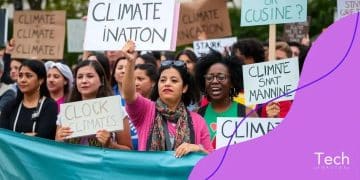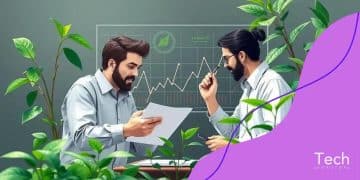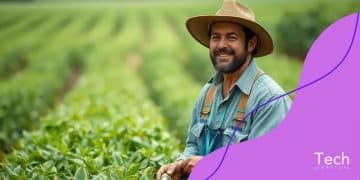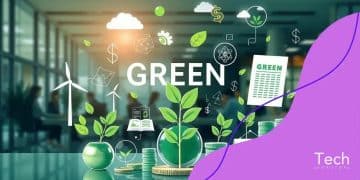Water crisis response: innovative solutions for the future
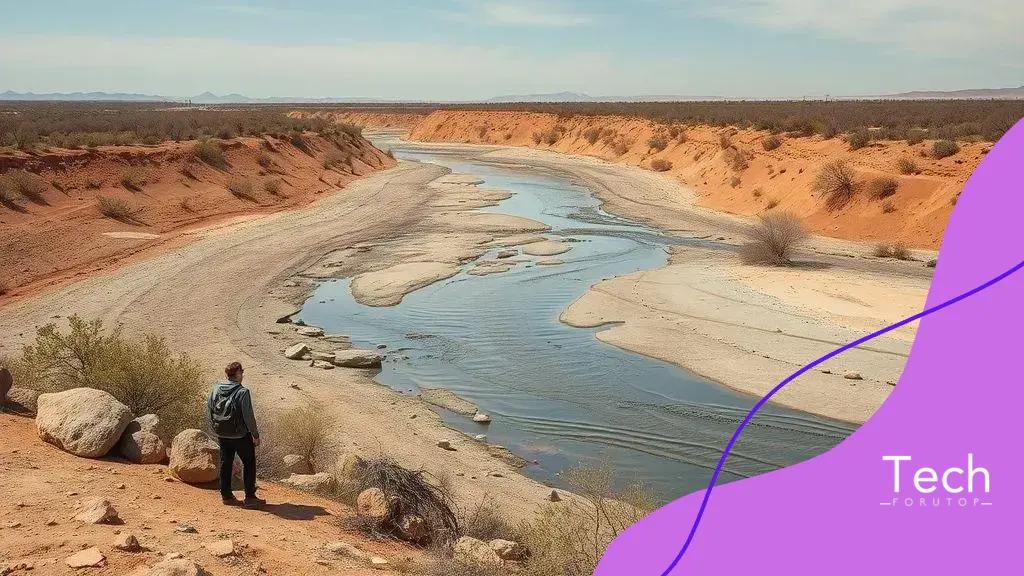
The water crisis response involves implementing sustainable practices, leveraging technology, and engaging communities to manage and conserve water effectively, ensuring long-term availability of this vital resource.
Water crisis response involves urgent measures to address the growing scarcity of clean water. It’s not just an environmental issue; it affects each of us daily. Have you ever wondered how our daily choices impact this pressing challenge?
Understanding the global water crisis
Understanding the global water crisis is essential for addressing it effectively. Water scarcity affects millions around the world, impacting health, agriculture, and economies. While natural factors like climate change exacerbate the situation, human actions are also significant contributors.
Causes of the Water Crisis
The water crisis stems from multiple interrelated factors. Urbanization, pollution, and the overuse of groundwater resources all play crucial roles.
- Increasing population demands more freshwater.
- Poor management of water resources leads to wastage.
- Industrial pollution contaminates existing freshwater supplies.
Regions facing extreme drought often witness conflict over water resources. Countries with limited access struggle to meet basic needs, resulting in economic instability.
Impacts on Communities
The impacts of the global water crisis are profound. Communities lacking access to clean water face serious health risks, including waterborne diseases. Without sufficient water, agriculture suffers, leading to food shortages. Furthermore, the economic consequences can escalate, driving migration and social unrest.
Consequently, nations must prioritize sustainable practices and technological innovations.
- Investing in water-efficient irrigation systems can enhance agricultural yield.
- Adopting rainwater harvesting techniques can provide alternative water sources.
- Collaboration between governments can improve water-sharing agreements.
Addressing the global water crisis requires a multifaceted approach involving community engagement, policy reform, and investment in technology.
Impact of climate change on water availability
The impact of climate change on water availability is significant and far-reaching. As global temperatures rise, traditional weather patterns are disrupted, resulting in severe consequences for freshwater resources.
Changing Weather Patterns
With climate change, we see shifts in precipitation, which affects both the amount and the distribution of water. Some regions may experience heavy rainfall, while others face prolonged droughts.
- More extreme storms can cause flooding, washing away valuable topsoil.
- Drought conditions reduce the availability of surface water.
- Changing precipitation patterns lead to unpredictable water supply.
This unpredictability places pressure on communities that rely heavily on consistent water access. Farmers, in particular, are affected, struggling to manage their crops with unreliable rainfall patterns.
Impact on Freshwater Resources
Climate change also affects freshwater systems, such as rivers, lakes, and aquifers. Warmer temperatures lead to increased evaporation, which reduces water levels in rivers and lakes. Additionally, snowpack, crucial for many water systems, is diminishing.
As snow melts earlier in the season, water availability during summer months declines. This can lead to competition over water resources, especially in arid regions. Here are some key concerns:
- Reduced snowpack affects water supply in warm months.
- Over-extraction of groundwater is becoming more common.
- Water quality diminishes as pollutants become more concentrated.
Addressing these challenges requires urgent action and innovation. Community-based strategies and adaptive management techniques will be crucial for mitigating the effects of climate change on water resources.
Sustainable practices for water management
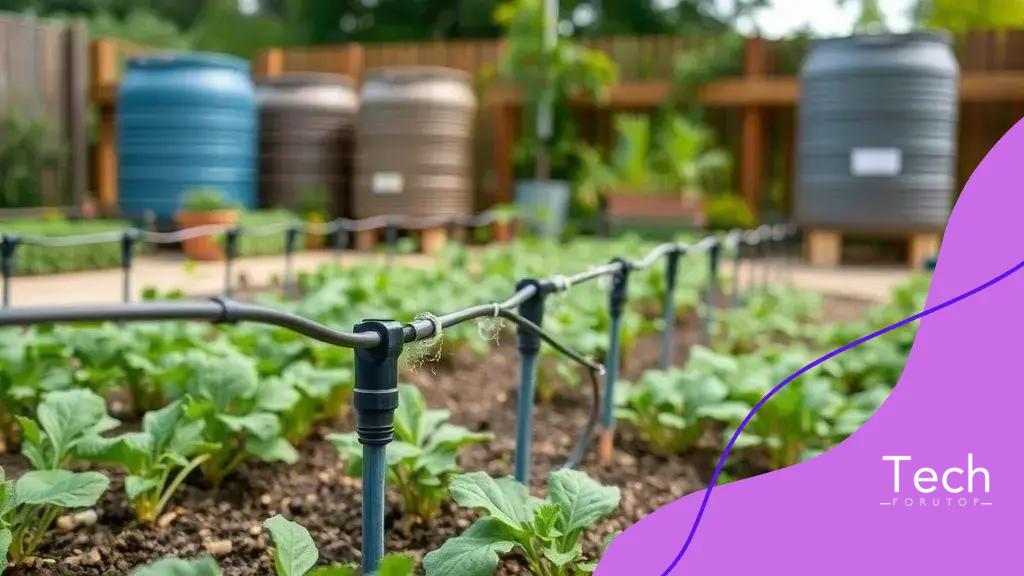
Sustainable practices for water management are critical in addressing the global water crisis. By implementing eco-friendly strategies, communities can conserve water and ensure its availability for future generations.
Rainwater Harvesting
One effective method is rainwater harvesting, which captures and stores rainwater for various uses. This technique helps reduce reliance on traditional water sources.
- Rain barrels can be used to collect runoff from roofs.
- Stored rainwater can irrigate gardens or flush toilets.
- Implementing rain gardens helps with groundwater recharge.
Adopting rainwater harvesting not only conserves water but also reduces stormwater runoff, therefore protecting local waterways.
Drip Irrigation
Another practical approach is drip irrigation. This method delivers water directly to the roots of plants, minimizing evaporation and runoff.
By using less water overall, farmers can significantly increase efficiency. Here are some benefits:
- Reduces water waste by targeting specific areas.
- Improves crop yields due to better water management.
- Increases resilience during drought periods.
Additionally, smart irrigation systems utilize technology to optimize watering schedules based on weather conditions, further enhancing water conservation.
Conservation Education
Community education is essential for increasing awareness of sustainable water practices. Educating the public on conservation techniques encourages responsible usage.
Schools can incorporate water education programs that teach children about their impact on local water resources. When individuals understand the connection between their actions and water scarcity, they are more likely to adopt sustainable habits.
Technological advancements in water conservation
Technological advancements in water conservation are changing how we manage our precious water resources. With growing concerns over water scarcity, innovative solutions are vital for sustainable usage.
Smart Water Meters
One significant leap is the development of smart water meters. These devices provide real-time data, allowing homeowners and businesses to track their water consumption accurately.
- Users can receive alerts for unusual spikes in usage, helping identify leaks.
- Data analysis can guide water conservation efforts effectively.
- Smart meters promote awareness of water consumption patterns.
This technology enables more informed decisions, reducing water waste significantly.
Advanced Irrigation Systems
Drip and sprinkler systems have evolved with advanced technology. Modern irrigation systems are now equipped with sensors that monitor soil moisture levels.
These sensors ensure that plants receive just the right amount of water. As a result, fields can be irrigated efficiently without overusing water resources. This technology offers several advantages:
- Minimizes evaporation and runoff losses.
- Promotes healthier crop growth with optimal hydration.
- Reduces energy costs associated with pumping water.
Farmers adopting these practices often report higher yields and lower costs.
Water Recycling Technologies
Innovations in water recycling are crucial for sustainable water management. Technologies such as membrane filtration and reverse osmosis allow for effective cleanup of wastewater.
By treating wastewater for reuse, communities can significantly reduce their freshwater demand. This recycling approach benefits both the environment and local economies.
Recycled water can be used for various purposes, including landscape irrigation, industrial processes, and even drinking water after further treatment.
Community initiatives for effective water response
Community initiatives for effective water response play a crucial role in addressing water challenges. Local groups can significantly impact how water is managed and conserved by working together.
Grassroots Movements
Grassroots organizations often lead the way in advocating for sustainable water practices. These groups mobilize volunteers and resources to educate the public about the importance of water conservation.
- Workshops and seminars can teach community members about conservation techniques.
- Local cleanup events can improve the quality of nearby water sources.
- Advocacy campaigns can push for policies that protect water resources.
Through these activities, communities can become more aware of their water usage and the critical need for conservation.
Partnerships with Local Governments
Collaborations between community groups and local governments can enhance water management efforts. By sharing knowledge and resources, these partnerships can implement effective solutions.
For example, together they can create programs for:
- Installing water-efficient fixtures in public buildings.
- Promoting rainwater harvesting across neighborhoods.
- Developing community gardens that use sustainable irrigation methods.
When local bodies and communities unite, they can create a more significant impact on overall water management.
Engaging Youth in Water Conservation
Engaging youth in water conservation efforts is vital for long-term sustainability. Schools and educational institutions can incorporate water education into their curricula.
Students can participate in projects that promote awareness and action, such as:
- Creating art projects depicting water conservation themes.
- Participating in water-related field trips to learn about ecosystems.
- Leading campaigns to reduce plastic usage that contaminates water.
By involving young people, communities foster a sense of responsibility and stewardship toward water resources for future generations.
FAQ – Frequently Asked Questions about Water Conservation and Management
What are key sustainable practices for water conservation?
Key practices include rainwater harvesting, efficient irrigation systems, and using water-saving fixtures.
How can technology help in water management?
Technology like smart water meters and advanced irrigation systems provide real-time data, ensuring efficient water use.
Why is community engagement important for water conservation?
Community involvement fosters awareness and collective action, leading to better water management and local initiatives.
What role does education play in water conservation?
Education helps raise awareness, especially among youth, about the importance of water conservation for sustainable living.
